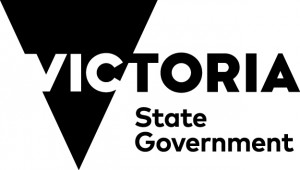In recent years I have delivered a number of presentations about the benefits of including women and girls in sport. One of the activities that the session begins with see’s attendees to share with others the first thing than comes to their mind when they hear the following words:
- Athlete
- Umpire
- Administrator
- Coach
- Board
- Canteen Attendant
Most responses - even from a room full of women - remain within traditional gender stereotypes, with male role models and change makers highlighted. It is the Canteen Attendant the consistently provides any hint that women are involved in sport. It is these stereotypes that need to be challenged.
Consider the following statistics:
- 51% of the Australian population is female[1]
- 8% of Australian women have higher-education qualifications[2]
- The rise in the female employment rate since 1974 has boosted economic activity by 22%. Further closing the gap between male and female employment rates could boost the level of Australian GDP by 11%.[3]
We have a large number of women in Victoria (let alone in Australia and across the world) who are highly educated and working hard to provide a substantial benefit to the organisations they work for and the broader economy on a whole. So why do we see so few women in leadership, decision making and board positions?
When discussing Good Governance practices, there is a key phrase that is frequently discussed:
“Your board should reflect the community you wish to serve”
For Victorian sport to be truly committed to including more women and girls; and represent the diversity of our community as a whole, the individuals charged with that responsibility also need to reflect the broader community. It is this diversity of opinion, skill, gender and experience (to name a few) that provides us with the ability to challenge and better understand the issues we face as a collective.
So what are the numbers?
- Between 33% of all board positions available in Victorian SSAs are currently held by women. This has increased from 27.9% in 2010[4].
- Australian Government Boards – 39.3% positions held by women[5]
- Australian NSOs - 24.4% of directorships are held by women[6]
- ASX200 - 17.1% of board positions are held by women[7]
Vicsport has been working with Victorian SSAs to address issues faced at a governance level through initiatives like the Good Governance project. While the number of women on boards is slowly increasing, we still have a long way to go before we reach the elusive gold medal standard for gender diversity on boards – 40:40:20[8].
Fiona Jones - Sports Consultant
This is the first in a series of articles and information that will be released over the coming months as Vicsport highlights the business case for gender diversity on boards.
[1] Australian Bureau of Statistics, 3101.0 - Australian Demographic Statistics, Sep 2013
[2] Australian Financial Review, Nov 2012 http://www.afr.com/p/national/education/infographic_how_australians_study_OAcwrGAguU4gJ11OFqzufK
[3] Australia’s Hidden Resource: The Economic Case for Increasing Female Participation’, Goldman Sachs & JBWere, November 2009
[4] Vicsport Good Governance Project – 2010 & Dec 2013
[5] Women on Boards, June 2013 http://www.womenonboards.org.au/pubs/bdi/2013/govt-federal.htm
[6] Women on Boards, January 2013 http://www.womenonboards.org.au/pubs/bdi/2013/nso.htm
[7] Australian Institute of Company Directors, December 2013 http://www.companydirectors.com.au/Director-Resource-Centre/Governance-and-Director-Issues/Board-Diversity/Statistics
[8] Australian Human Rights Commission (2010), Gender Equality Blueprint Report. [Online] Available at: https://www.humanrights.gov.au/publications/gender-equality-blueprint-2010
You may also be interested in...
FFV Women in Football Network Launched

On the back of the Matildas success in the FIFA Women’s World Cup, Football Federation of Victoria (FFV) has launched a Women in Football Network, with the inaugural breakfast held last week at the MCG
VicHealth Innovation Challenge: Sport

VicHealth is looking for clever ideas to get more Victorians physically active
Volunteering Victoria's Volunteer Management Toolkit

Free Volunteer Management in Sport Toolkit Given that an active volunteer workforce is critical to Australian sport, it is perhaps surprising that very few sporting organisations have a dedicated focus on volunteer management




















